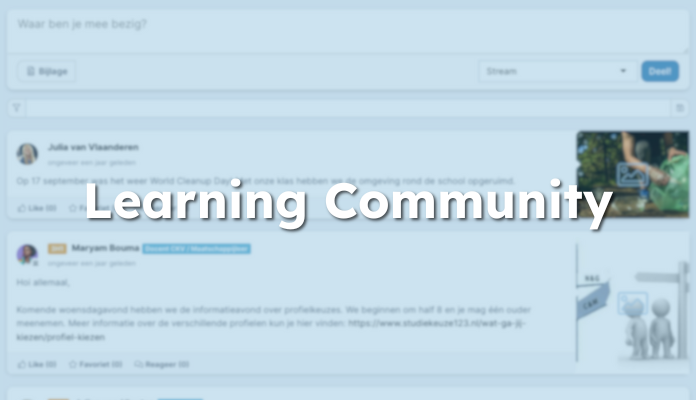Simulise: Learning Community

People learn the most from each other. At work, within school, in your free time, people are always working with each other to become better.
We see that contact with each other, especially among students, is increasingly taking place with social media. And that children enjoy helping others when asked. Or unsolicited, as long as they are alerted to each other. And, of course, that happens a lot on social media. Children see each other’s pictures or pieces and like to give each other a like or a nice comment. After all, they often receive this in return, and thus self-confidence increases. If the comments are less friendly, this sometimes scares children. Even if it is constructive it is not always appreciated. Children need to learn that, especially when combined with use of social media.
Learning Community
That’s why Simulise offers a learning community. A Facebook-like news stream where you can post status updates and like and comment on each other. But the practice is that kids don’t use a learning community without a reason; after all, they already have Snapchat and Instagram.
Portfolio items
In Simulise, all items posted by students in his or her portfolio are also posted in this news stream. Thus, this actively brings these items to the attention of fellow students. We reward students who comment on each other’s pieces and the comments can also be followed by fellow students and teachers. All comments on the portfolio items are retained in the portfolio and thus can provide retrospective insight into the construction and processing of these comments. In this way, students help each other and learn how to give and receive constructive comments in a familiar social media setting.
Rights
Who is allowed to follow each other in Simulise is determined by the school. Of course, the student himself or herself may decide whether an item may be placed in the news stream and who may or may not see the item. Students can also set up communities themselves and invite other students and teachers into them with the school maintaining access to these communities at all times.
Learning-communtity is widely used in settings where students learn with and from each other. Both in HBO, MBO and Continuing Education.

